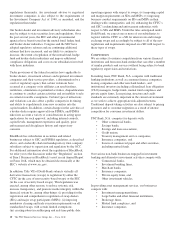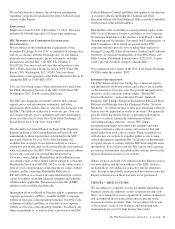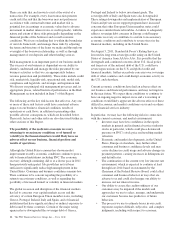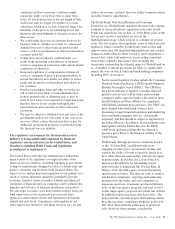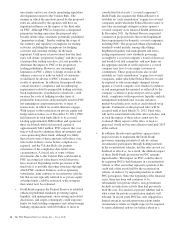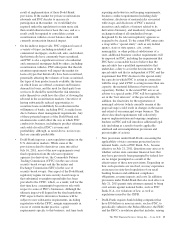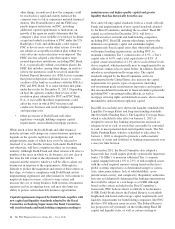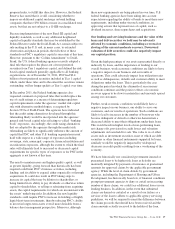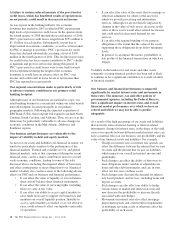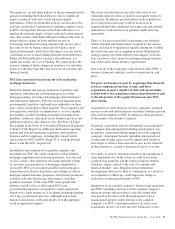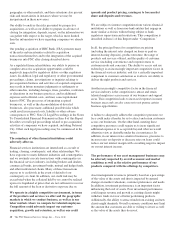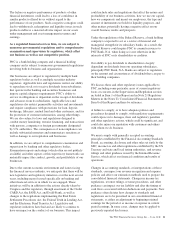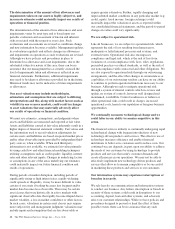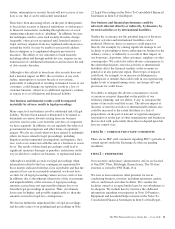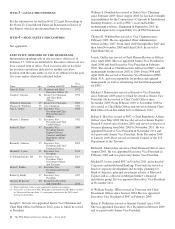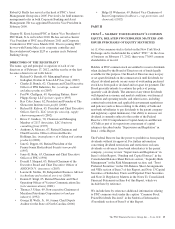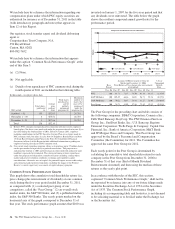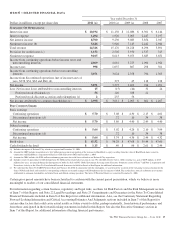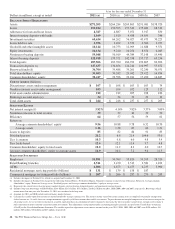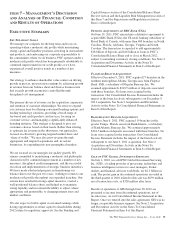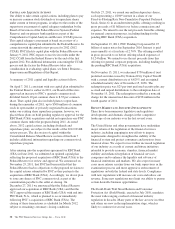PNC Bank 2011 Annual Report Download - page 29
Download and view the complete annual report
Please find page 29 of the 2011 PNC Bank annual report below. You can navigate through the pages in the report by either clicking on the pages listed below, or by using the keyword search tool below to find specific information within the annual report.geographic or other markets, and these situations also present
risks and uncertainties in instances where we may be
inexperienced in these new areas.
Our ability to analyze the risks presented by prospective
acquisitions, as well as our ability to prepare in advance of
closing for integration, depends, in part, on the information we
can gather with respect to the target, which is more limited
than the information we have regarding companies we already
own.
Our pending acquisition of RBC Bank (USA) presents many
of the risks and uncertainties related to acquisition
transactions themselves and to the integration of the acquired
businesses into PNC after closing described above.
As a regulated financial institution, our ability to pursue or
complete attractive acquisition opportunities could be
negatively impacted by regulatory delays or other regulatory
issues. In addition, legal and regulatory or other governmental
proceedings, claims, investigations or inquiries relating to
pre-acquisition business and activities of acquired companies
may result in future monetary judgments or settlements or
other remedies, including damages, fines, penalties, restitution
or alterations in our business practices, and in additional
expenses and collateral costs, and may cause reputational
harm to PNC. The processes of integrating acquired
businesses, as well as the deconsolidation of divested
businesses, also pose many additional possible risks which
could result in increased costs, liability or other adverse
consequences to PNC. Note 22 Legal Proceedings in the Notes
To Consolidated Financial Statements in Item 8 of this Report
describes several legal proceedings related to pre-acquisition
activities of companies we have acquired, including National
City. Other such legal proceedings may be commenced in the
future.
The soundness of other financial institutions could
adversely affect us.
Financial services institutions are interrelated as a result of
trading, clearing, counterparty, and other relationships. We
have exposure to many different industries and counterparties,
and we routinely execute transactions with counterparties in
the financial services industry, including brokers and dealers,
commercial banks, investment banks, mutual and hedge funds,
and other institutional clients. Many of these transactions
expose us to credit risk in the event of default of our
counterparty or client. In addition, our credit risk may be
exacerbated when the collateral held by us cannot be realized
upon or is liquidated at prices that are not sufficient to recover
the full amount of the loan or derivative exposure due us.
We operate in a highly competitive environment, in terms
of the products and services we offer and the geographic
markets in which we conduct business, as well as in our
labor markets where we compete for talented employees.
Competition could adversely impact our customer
acquisition, growth and retention, as well as our credit
spreads and product pricing, causing us to lose market
share and deposits and revenues.
We are subject to intense competition from various financial
institutions as well as from non-bank entities that engage in
many similar activities without being subject to bank
regulatory supervision and restrictions. This competition is
described in Item 1 of this Report under “Competition.”
In all, the principal bases for competition are pricing
(including the interest rates charged on loans or paid on
interest-bearing deposits), product structure, the range of
products and services offered, and the quality of customer
service (including convenience and responsiveness to
customer needs and concerns). The ability to access and use
technology is an increasingly important competitive factor in
the financial services industry, and it is a critically important
component to customer satisfaction as it affects our ability to
deliver the right products and services.
Another increasingly competitive factor in the financial
services industry is the competition to attract and retain
talented employees across many of our business and support
areas. This competition leads to increased expenses in many
business areas and can also cause us to not pursue certain
business opportunities.
A failure to adequately address the competitive pressures we
face could make it harder for us to attract and retain customers
across our businesses. On the other hand, meeting these
competitive pressures could require us to incur significant
additional expense or to accept risk beyond what we would
otherwise view as desirable under the circumstances. In
addition, in our interest rate sensitive businesses, pressures to
increase rates on deposits or decrease rates on loans could
reduce our net interest margin with a resulting negative impact
on our net interest income.
The performance of our asset management businesses may
be adversely impacted by overall economic and market
conditions as well as the relative performance of our
products compared with the offerings by competitors.
Asset management revenue is primarily based on a percentage
of the value of the assets and thus is impacted by general
changes in market valuations, customer preferences and needs.
In addition, investment performance is an important factor
influencing the level of assets. Poor investment performance
could impair revenue and growth as existing clients might
withdraw funds in favor of better performing products.
Additionally, the ability to attract funds from existing and new
clients might diminish. Overall economic conditions may limit
the amount that customers are able or willing to invest as well
as the value of the assets they do invest.
20 The PNC Financial Services Group, Inc. – Form 10-K


